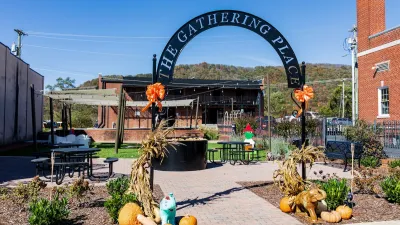In the first entry in a series exploring the connection between the processes and products of Placemaking and city governance, PPS explores how "Place Governance" can increase leadership, equity, and cohesion among citizens.
"Place Governance" is what the Project for Public Spaces (PPS) calls the citizen-centered model for "[solving] human problems with design solutions" that's begun to emerge around placemaking in cities around the world. "In Place Governance," the essay contends, "officials endeavor to draw more people into the civic decision-making process." And, "by positioning public spaces at the heart of action-oriented community dialog," this process can lead to a shift in thinking about citizenship by "re-framing [it] as an on-going, creative collaboration between neighbors."
"If the dominant framework for understanding citizenship today is passive, with citizens ‘receiving’ government services and being ‘given’ rights, then we need to develop affirmative cultures around citizen action," says PPS. To create stronger cities through economic development and community cohesion, citizen action cannot be limited to engagement. "You need civic engagement plus the belief that you can make a difference in order for it to create greater attachment," adds Katherine Loflin, who has studied the topic for the Knight Foundation’s Soul of the Community Study.
"Equitable places are not given, they are made, collaboratively," concludes PPS. "Everyone has a part to play, from the top down, and from the bottom up."
Editor's Note: For more reading on this subject see a master's thesis, titled "The effects of participatory practices on the processes and products of architecture and urban design", that's collecting dust on a shelf at the UCLA library (wink, wink).
FULL STORY: Stronger Citizens, Stronger Cities: Changing Governance Through a Focus on Place

Study: Maui’s Plan to Convert Vacation Rentals to Long-Term Housing Could Cause Nearly $1 Billion Economic Loss
The plan would reduce visitor accommodation by 25,% resulting in 1,900 jobs lost.

North Texas Transit Leaders Tout Benefits of TOD for Growing Region
At a summit focused on transit-oriented development, policymakers discussed how North Texas’ expanded light rail system can serve as a tool for economic growth.

Why Should We Subsidize Public Transportation?
Many public transit agencies face financial stress due to rising costs, declining fare revenue, and declining subsidies. Transit advocates must provide a strong business case for increasing public transit funding.

How to Make US Trains Faster
Changes to boarding platforms and a switch to electric trains could improve U.S. passenger rail service without the added cost of high-speed rail.

Columbia’s Revitalized ‘Loop’ Is a Hub for Local Entrepreneurs
A focus on small businesses is helping a commercial corridor in Columbia, Missouri thrive.

Invasive Insect Threatens Minnesota’s Ash Forests
The Emerald Ash Borer is a rapidly spreading invasive pest threatening Minnesota’s ash trees, and homeowners are encouraged to plant diverse replacement species, avoid moving ash firewood, and monitor for signs of infestation.
Urban Design for Planners 1: Software Tools
This six-course series explores essential urban design concepts using open source software and equips planners with the tools they need to participate fully in the urban design process.
Planning for Universal Design
Learn the tools for implementing Universal Design in planning regulations.
City of Santa Clarita
Ascent Environmental
Institute for Housing and Urban Development Studies (IHS)
City of Grandview
Harvard GSD Executive Education
Toledo-Lucas County Plan Commissions
Salt Lake City
NYU Wagner Graduate School of Public Service




























